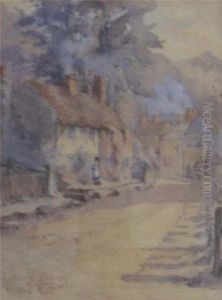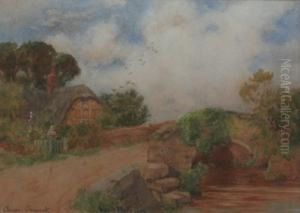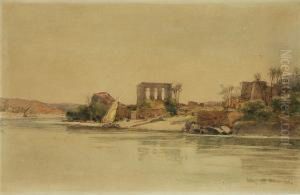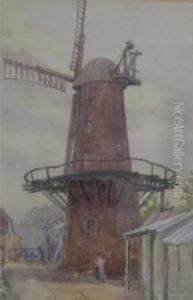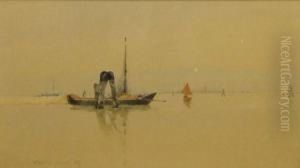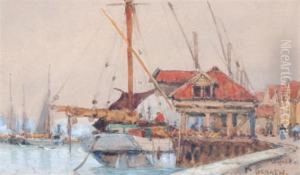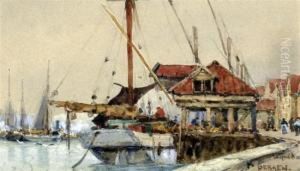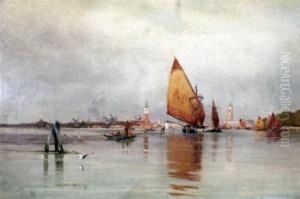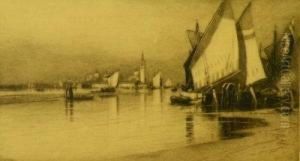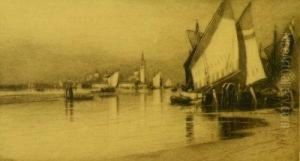Wilfrid Ball Paintings
Wilfrid Williams Ball was an English artist known for his watercolor landscapes and etchings. Born on June 14, 1853, in Paddington, London, Ball developed an early interest in art. Despite this initial interest, he began his career in the legal profession but eventually abandoned it to pursue his passion for painting.
Ball was largely self-taught as an artist, though he did receive some formal art education. He traveled extensively in Britain and abroad, drawing inspiration from various landscapes. His works often depicted rural scenes, coastal views, and urban landscapes with a particular focus on accurately representing architectural details.
In the 1880s, Ball began to gain recognition as an artist, exhibiting at the Royal Academy and other prominent institutions. He became associated with the Royal Society of British Artists and was later elected as a member of the Royal Watercolour Society, reflecting his growing stature within the art community.
Ball's work was appreciated for its delicate detail, technical skill, and his ability to capture the atmospheric qualities of light and weather. In addition to his watercolors, Ball was also an accomplished printmaker and etcher. His etchings, like his paintings, often featured landscapes and were notable for their fine lines and attention to texture.
Throughout his career, Ball contributed illustrations to various publications and books, which helped to popularize his work. His artistic output was prolific, and his works were widely collected during his lifetime.
Wilfrid Ball's health began to decline in the latter part of his life, but he continued to paint until his death on February 12, 1917. He left behind a significant body of work that continues to be appreciated for its representation of the English landscape during the late 19th and early 20th centuries.
